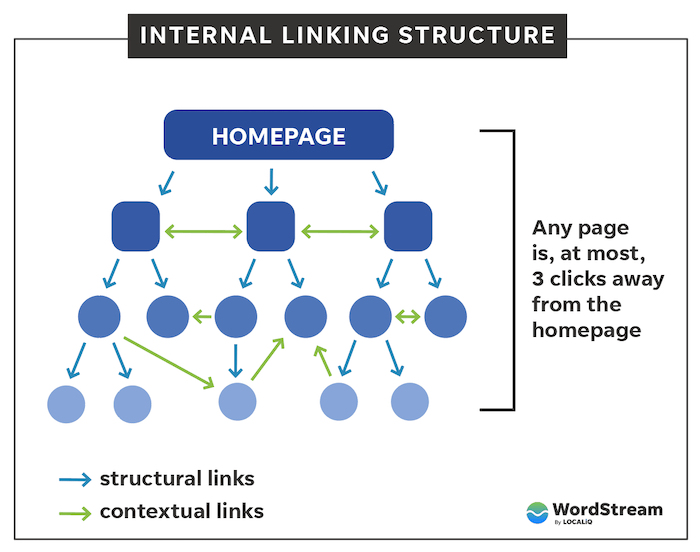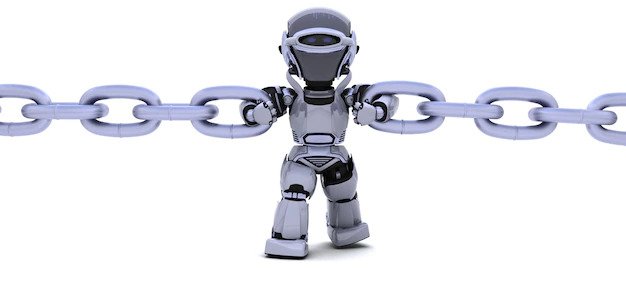When it comes to SEO, internal linking is one of the most important yet often overlooked tactics. If you’re not familiar with the term “internal linking”, you should read the full blog.
It is the process of creating links between pages on your website. Internal links help search engines understand the structure and organization of a website and help them rank pages more accurately. They are also essential for improving user experience by allowing people to quickly navigate your site from page to page.
In this blog post, we will explore what internal linking is in SEO and talk about why it’s so important for achieving success online.
Internal Links vs. External Links
When it comes to links and SEO, there are two main types: internal links and external links. Internal links are links that go from one page on your website to another page on your website. External links are links that go from your website to another website.
There are several reasons why internal linking is significant. The first benefit is that it makes your website more understandable to search engines. If all of the pages on your site are linked together, it’s easier for Google to crawl and index them. Second, internal linking can help improve your site’s architecture. A well-linked ssl website is easy to navigate, and users will be able to find the content they’re looking for more easily. Finally, internal linking can boost your SEO efforts by passing along “link juice” from one page to another. When one of your pages has a lot of authority, any link on that page will pass some of that authority to the pages it’s linked to.
For SEO, external linking is also crucial. Linking to reputable websites demonstrates to Google your authority as a source of information. This may raise the position of your website in search results.
In addition, when you get other websites to link back to yours (known as “backlinks”), it further increases your authority and can help your site rank even higher.
So, do you know which type of link is more crucial? Both! You should be doing both internal and external.

The Different Types of Internal Links
There are three types of links you can employ for internal linking:
- Anchor text links:These are links when the link text contains keywords. For example, if you were linking to a page about SEO Course in Amritsar City, your anchor text might be “SEO Course in Amritsar” or “Learn more about SEO”.
- Image Links: These are links that use an image instead of text as the link. For example, you might have an image of a website with a link back to the homepage.
- Navigation Links: These are links that are part of your website’s navigation menu. For example, if you have a website with a header menu that has links to different pages on your site, those would be navigation links.
How to Optimize Your Internal Links
If you want to improve your website’s SEO, then you need to pay attention to your internal linking. The process of internal linking is to land visitors from one webpage to another web page.
While it may appear like a straightforward process, SEO’s most crucial component is actually this. That’s because internal links help search engines understand your website’s structure and content.
Here are some tips for optimizing your internal links:

-
Make sure your links are relevant.
Make sure your internal links are relevant as a first step in internal link optimization. That means linking to pages that are related to the topic at hand. For example, if you’re blogging about SEO, you might want to link to other pages on your website that mention SEO.
-
Make use of keyword-rich anchor text.
Use anchor text that is keyword-rich whenever you connect to another page on your website. Search engines will be informed about the topic of the page you are linking to and will be assisted in properly indexing it as a result.
-
Link often, but don’t overdo it.
It’s important to include internal links in your content, but you don’t want to overdo it. A good rule of thumb is to include 1-2 links per 100 words of content. Any more than that and you run the risk of being penalized by search engines for “keyword stuffing.”
The Advantages of Interlinking
Use internal linking to connect different pages on your website. This is different from external linking, which is when you link to a page on another website. Internal linking can be beneficial for a number of reasons.
Firstly, it can help to improve the structure of your website and make it easier for visitors to navigate around. Secondly, it can help search engines to index your pages more effectively and boost your SEO efforts. Finally, it can also help to increase the PageRank of individual pages on your site, which can in turn lead to more traffic and higher search engine rankings.
The Disadvantages of Internal Linking
When it comes to SEO, internal linking is often thought of as a good thing. Although it can undoubtedly be advantageous, there are some drawbacks that you should be aware of.
One of the biggest disadvantages of internal linking is that it can sometimes lead to a decrease in PageRank. This happens when too many links are pointing to a single page on your site. If this happens, it can make it difficult for that page to rank highly in search engine results pages (SERPs).
Another downside of internal linking is that it can make your site look cluttered and messy. A page with too many links might be confusing for users and make it harder for them to find the information they’re looking for.
Finally, if not done properly, internal linking can actually hurt your SEO efforts. This happens when links are pointing to pages that don’t exist or are no longer active. Search engines will penalize your site for these types of broken links, so be sure to keep an eye on them and fix them as soon as possible.
Conclusion
In conclusion, according to SEO experts, internal linking is an important component of any successful SEO strategy. It not only helps to optimize your website and make it easier for search engines to discover your content, but it also improves user experience by making it easier for visitors to find what they are looking for on your site. If you want to make sure that your website is properly optimized and stands a chance at ranking well in the SERPs, then internal linking should be a priority.

